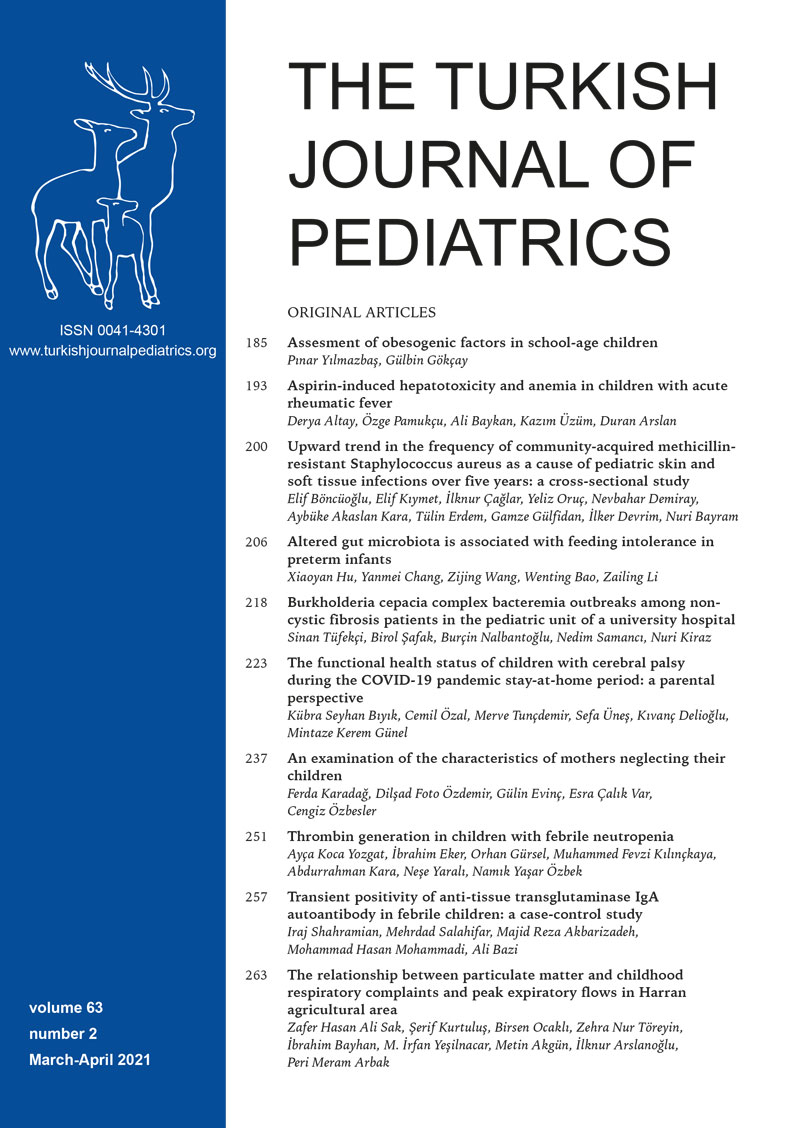Abstract
Background. Nephrotic syndrome (NS) is a common kidney disease associated with an increased risk of thrombotic events. The aim of this study was to assess the prothrombotic potential of patients with NS using the thrombin generation assay (TGA).
Methods. A total of 35 patients with NS, who were followed in the Division of Pediatric Nephrology in Behcet Uz Children`s Hospital, were included in the study. After the patients with Steroid Resistant NS (n:3) were excluded, 32 patients in total were evaluated for TGA. Patients were primarily classified according to their response to corticosteroid therapy. The control group consisted of 34 healthy volunteers with similar gender and age distribution to the patients. Blood urine nitrogen, creatinine, albumin, triglyceride, cholesterol, 24-hour proteinuria, platelets, erythrocyte sedimentation rate, C-reactive protein and thrombin generation values in activation and remission period of NS were compared. Moreover, TGA values of the patients in their remission period were compared with the values of those in the control group.
Results. Endogenous thrombin potential (ETP) and peak thrombin levels were significantly higher in the activation period than remission period of NS. Additionally, after the patients achieved remission, their ETP was still higher than the control group. There was a negative correlation between both ETP and peak thrombin levels of patients with serum albumin, whereas a significant positive correlation was detected with platelet levels. Thromboembolic events were not observed in any of the patients during follow-up.
Conclusions. Nephrotic syndrome is strongly associated with hypercoagulopathy as assessed by TGA during active NS. The present study reinforces the usefulness of TGA as a marker of hypercoagulability in pediatric patients with NS. Further studies are needed in this regard.
Keywords: children, hypercoagulability, nephrotic syndrome, thrombin generation assay
Copyright and license
Copyright © 2021 The Author(s). This is an open access article distributed under the Creative Commons Attribution License (CC BY), which permits unrestricted use, distribution, and reproduction in any medium or format, provided the original work is properly cited.














